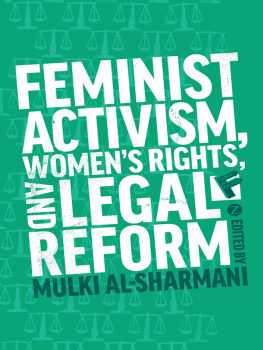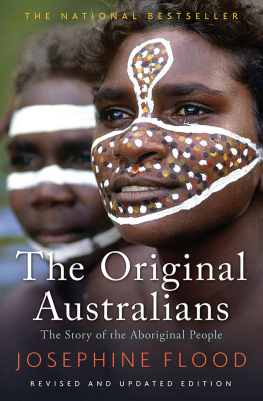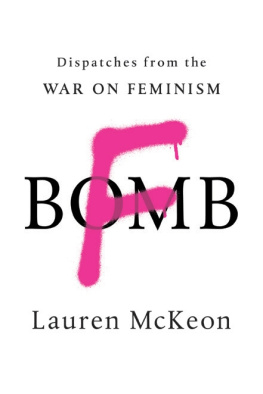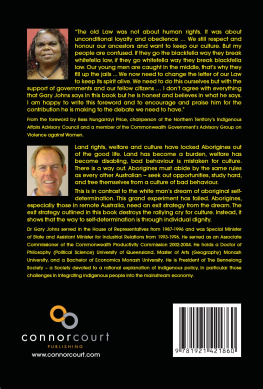Illustrations
From M. R. Morgan, A Drop in a Bucket: The Mt Margaret Story , Box Hill, United Aborigines Mission, 1986
From M. R. Morgan, A Drop in a Bucket: The Mt Margaret Story , Box Hill, United Aborigines Mission, 1986
Australian Federation of Women Voters, 1930, League of Women Voters Papers, SRC 116/1, Mortlock Library, State Library of South Australia
The Dawn , 21 August 1929
League of Women Voters Papers, SRC 116/15, Mortlock Library, State Library of South Australia
1935 Geneva League of Nations Assembly Australian Delegation Bessie Rischbieth Papers, MS 2004/9/42, National Library of Australia
From Peter Donovan, Alice Springs: its History and the People who Made It , Alice Springs Town Council, 1988
Fairfax Photo Library
From A. O. Neville, Australias Coloured Minority: its Place in the Community , Sydney, Currawong, 1947
From Violet E. Turner, Pearls of the Deep , Adelaide, United Aborigines Mission, c . 1936
From M. M. Bennett, Teaching the Aborigines: Data from Mount Margaret Mission, WA, 1935 , Perth, United Aborigines Mission, 1935
From William Robertson, Coo-ee Talks: A Collection of Lecturettes upon Early Experiences among the Aborigines of Australia Delivered from a Wireless Broadcasting Station , Sydney, Angus & Robertson, 1928
A Real Australian (The Lubra) , . E. Minns
The Sun and Guardian (Sydney), Sunday June 1933
Dr W. Walker, Report on Aborigines, Australia, 19289, AA Al 28/10743, Photo 51, National Archives of Australia
Acknowledgements
I HAVE BEEN able to complete this book under the very best of circumstances. Since 1998, I have been a postdoctoral fellow at the Centre for Cross-Cultural Research, thanks to their own award scheme and that of the Australian Research Council. I would like to acknowledge both the Centre and the Council for this wonderful opportunity. I am also grateful for subventions towards publication from the Australian Academy of the Humanities and the Publications Committee at the Australian National University.
This book began in Womens Studies and History at La Trobe University in 1991. First of all, I must thank Marilyn Lake who was my supervisor over the next four years. When I arrived, I was intrigued by the presence of eugenics within first wave feminism, and I wondered why it was that Australian feminist organisations, concerned to protect the purity of the white race, seemed little interested in the equally highly charged issue of black-white relations. But, as Bessie Rischbieths extensive papers held at the National Library of Australia soon revealed, a large and vibrant feminist community within and beyond Australia was concerned with broader questions of race relations from the first decades of last century, and was ready to advocate its own set of answers to the problem of racial mixture.
Numerous knowledgeable librarians around Australia and overseas helped me in my pursuit of these women and their campaigns in the archives of state, national and international womens organisations. They include manuscript librarians at the National Library of Australia, the State Library of Victoria, and the Mortlock Library of South Australia; and archivists in the Australian Archives in Canberra, the State Archives of South Australia and Western Australia. Overseas they include librarians at the Fawcett Library in London, and Rhodes House in Oxford. Particular thanks goes to David Doughan at the Fawcett. For permission to reproduce images held in their collections, thank you to the Battyc Library, Western Australia, the La Trobe Librarys Australiana Collection, Victoria, the State Library of South Australias Mortlock Library of Australiana, the National Library of Australia, Canberra, and the Fairfax Photo Library.
During this exciting time of research and writing, I had many valued colleagues and friends at La Trobe, including Diane Kirkby, who was always encouraging, and members of the postgraduate reading group including Ruth Ford, Liz OConnor, and Esther Faye. I would like to thank Katie Holmes, and the members of the Lilith Collective, including Catriona Elder, Alison Bash ford, Cathy Cole-borne, Sara Knox, Adele Murdolo, and Di Hall, for their enthusiasm and energy. Working together was a great antidote to the often solitary life of thesis writing.
After its completion in 1995, that original manuscript slowly emerged into its present form with the support of colleagues and friends at Dcakin University and the Australian National University. While I was working in Womens Studies at Deakin, Julie McLeod provided inspiration and friendship, as did Renate Howe and Sarah Paddle. Renate, Sarah and I enjoyed what has to be one of the most demanding yet fulfilling of tasks, writing grant applications! 1 continue to learn from Sarahs thinking about feminist history and post-colonial theory in Australia. In 1997, I joined the Centre for Womens Studies at the Australian National University in Canberra, and greatly enjoyed teaching a course in my own area of specialisation. Thank you to my students for making this such a delightful experience, and to my colleagues at the Centre, Jindy Pettman, Rosanne Kennedy and Helen Keane.
Here at the Centre for Cross-Cultural Research, I enjoy the benefits of a vibrant and innovative program which crosses academic boundaries. In 1999, a colleague and I formed a comparative feminist history reading group. Conversations with its members, Shelley Mallett, Debbie Bird Rose, Ros Dalziell, Ann McGrath, Dennis Deslippe, and co-convenor Alison Kibler, and with Jane Lydon, Richard Eves, Anita Callaway and Christine Watson, have confirmed once again the great potential of bringing together people working in and across different fields. I would like to thank the then director, Nicholas Thomas, for encouraging me to apply for an ARC postdoctoral fellowship, and administrators Julie Gorrell, Ann-Maree OBrien and Arwen Blackwood for their outstanding advice and assistance.
In addition, I particularly want to thank Patricia Grimshaw, Ann Curthoys, Jill Matthews and Margaret Jolly for their scholarship, mentoring and friendship, and Bain Attwood, Geoff Gray and Tim Rowse for their work in Aboriginal history. Outside Australia, important figures include Angela Woollacott, Catherine Hall, Leila Rupp, and Annie Coombs. They have provided wonderful role models. Similarly, Antoinette Burton deserves special mention. In 1994 I had the good fortune to meet Antoinette at the Australian Historical Association conference in Melbourne. I greatly admired her work so I was delighted to find that she was chairing my session. Antoinette has been a generous colleague and friend ever since. Her capacity to bring together new scholars working on critical histories of empire and nation was illustrated in 1997 at the Anglo-American Conference of Historians in London. Participating in that conference was a highly memorable experience.
This book has benefited from the response of audiences in numerous seminars and conferences, as well as through the advice of journal editors and anonymous reviewers. Thank you to all those involved. I would also like to thank my editor, Janet Mackenzie, whose unobtrusive editing improved this manuscript markedly, and commissioning editor Teresa Pitt at Melbourne University Press, for supporting its publication in the first place. Alongside excellent editorial assistance, I have learned a great deal from colleagues Shelley Mallett, Alison Kibler and Douglas Craig. They were insightful readers of sections from my penultimate draft: I hope I have been able to put their combined wisdom to good use. Ultimately, of course, the responsibility for what follows rests entirely with me.






